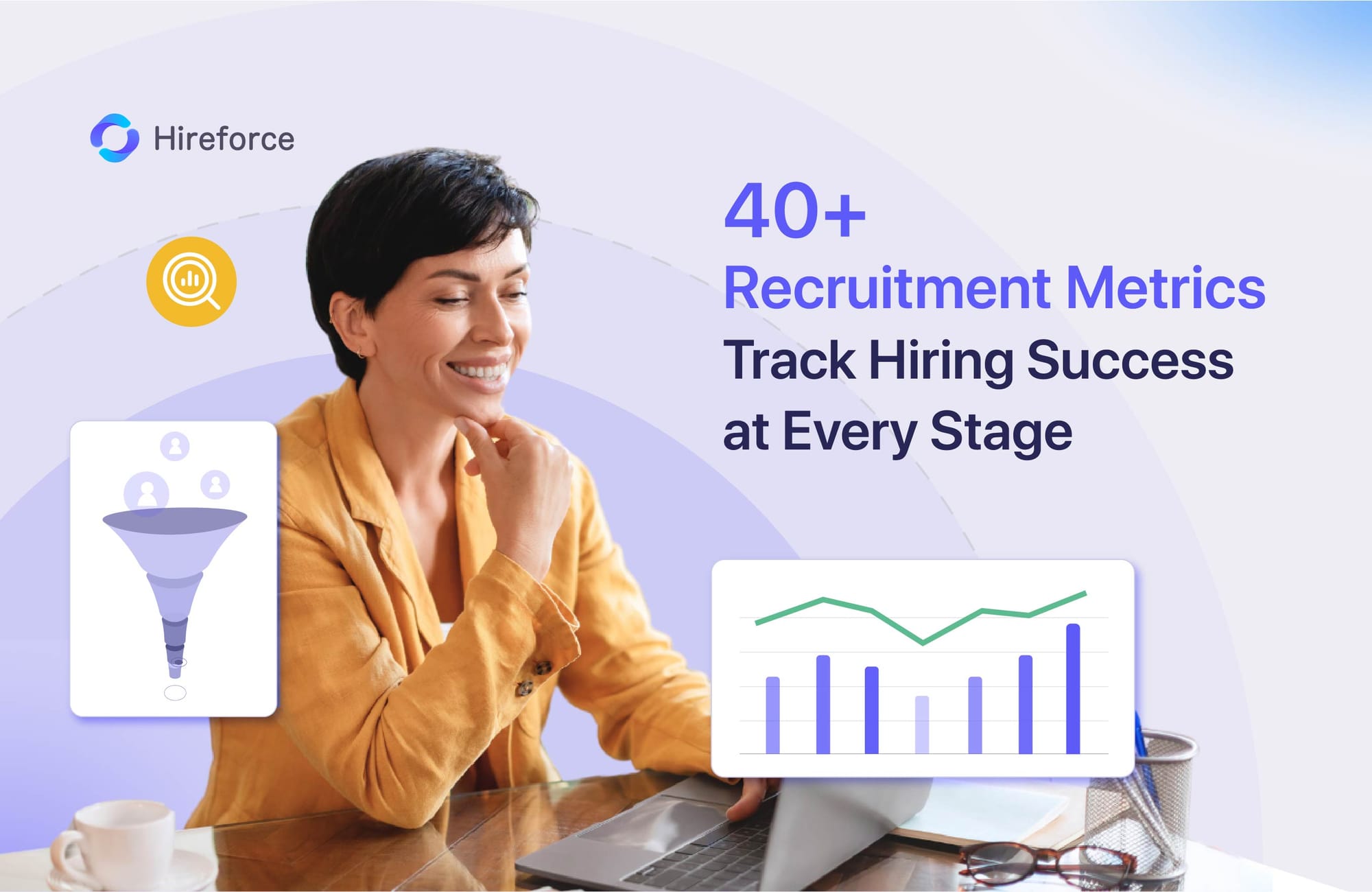A talent acquisition (TA) strategy is the comprehensive plan an organization uses to find, attract, assess, and hire the talent needed to achieve its business objectives. Consider that a significant 81% of U.S. employers are now adopting skills-based hiring practices, representing a dramatic increase that reflects a fundamental shift in how organizations identify and secure talent, which means this is the time organizations should review current strategies and make changes in order to keep up with the market for sustainable success.
This guide provides a playbook for building a robust, data-driven talent acquisition strategy for 2025, enabling you to navigate current shifts, leverage modern tactics, and measure your impact effectively. Readers will gain actionable insights into market trends, core strategic pillars, step-by-step implementation, and essential resources.
Why a Talent Acquisition Strategy Matters in 2025
Developing a formal talent acquisition strategy is critical for navigating the complexities of the modern workforce landscape. Market shifts demand a more sophisticated approach than ever before. The rapid integration of Artificial Intelligence (AI) into recruitment processes is transforming how candidates are sourced, screened, and engaged, offering efficiency gains but also demanding careful management to maintain personalization and mitigate bias. Persistent critical skills shortages continue to challenge employers globally, making the ability to precisely identify, attract, and develop needed capabilities a key competitive differentiator. Furthermore, the widespread adoption of hybrid and flexible working models necessitates strategies that can effectively engage talent regardless of location, impacting employer branding and candidate expectations.
Ignoring market shifts leads to tangible consequences, including difficulty filling critical roles, increased time-to-fill, lower quality hires, and ultimately, hindered business growth. Conversely, a well-defined strategy has a direct impact on the bottom line by aligning recruitment with specific business needs and future skill requirements. It reduces time-to-fill through more efficient processes and proactive pipelining. It enhances the candidate experience, strengthening the employer brand and attracting top performers. Ultimately, a strategic approach ensures talent acquisition becomes a proactive engine for organizational success, not just a reactive necessity.
Core Pillars of a Modern Talent Acquisition Strategy
An effective talent acquisition strategy for 2025 rests on several interconnected pillars, leveraging data and intelligence to move beyond traditional recruitment methods.
Data-Driven Workforce Planning
Anticipating future talent needs is fundamental. This requires robust demand forecasting, analyzing business goals and growth projections to predict required roles and skills for your organization. Deep labor-market intelligence provides insights into external talent availability, compensation benchmarks, and competitor activity. Scenario modeling helps organizations prepare for various potential futures, ensuring agility in workforce planning. Understanding the gap between internal skills supply and future demand allows for proactive talent sourcing, development, and mobility strategies.
Skill-Based Supply vs. Demand
Skills-First Talent Intelligence
The shift towards skills-based practices is reshaping talent acquisition. Central to this is the development and adoption of a skills taxonomy – a common language for defining and assessing capabilities across the organization. This enables more precise identification of skill needs and gaps. Leveraging Talent Intelligence platforms provides insights into both internal and external skills landscapes, facilitating data-driven decisions. This pillar emphasizes not only hiring for skills but also promoting internal mobility by identifying existing employees with adjacent skills who can be upskilled or reskilled for open roles, boosting retention and engagement.
Candidate Experience & Employer Brand
Attracting top talent requires more than just competitive compensation; it demands a compelling candidate experience aligned with a strong employer brand. This starts with clearly defining and communicating the Employee Value Proposition (EVP) – what makes the organization a unique and desirable place to work. Implementing omnichannel communication strategies ensures seamless and consistent engagement across all touchpoints (career site, social media, email, chatbots). Personalization, tailoring interactions based on candidate profiles and interests, significantly enhances engagement and demonstrates genuine interest. A positive experience transforms candidates into brand advocates, regardless of the hiring outcome.
Measurement & Continuous Improvement in Your Talent Acquisition Strategy
A data-driven strategy requires continuous measurement and refinement. Establishing TA metrics dashboards provides real-time visibility into key performance indicators (KPIs) like time-to-fill, cost-per-hire, quality-of-hire, source effectiveness, and candidate satisfaction. Analyzing these metrics reveals bottlenecks and areas for improvement. Applying predictive analytics can help forecast hiring outcomes, optimize sourcing channels, and identify candidates with higher potential for success. This commitment to ongoing measurement ensures the talent acquisition strategy remains effective, agile, and aligned with evolving business needs.

Step-by-Step Guide to Building Your Strategy

1. Audit Current Talent Acquisition Process
Begin by thoroughly evaluating your existing talent acquisition (TA) processes, technology stack, and performance metrics. Identify strengths, weaknesses, bottlenecks, and areas where data insights are lacking. Gather feedback from recruiters, hiring managers, and candidates to understand pain points and opportunities from multiple perspectives. This baseline assessment is crucial for identifying priorities.
2. Define Skills Requirements & Success Profiles
Collaborate with business leaders and hiring managers to define the critical skills and competencies required for key roles, both now and in the future. Move beyond traditional job descriptions to build detailed success profiles that encompass technical skills, soft skills, experience, and potential. Incorporate findings from workforce planning and talent intelligence analyses.
3. Design Candidate Journeys & Content
Map out the ideal candidate journey for key roles, from initial awareness to onboarding. Design targeted content (job descriptions, career site pages, email campaigns, social media posts) that aligns with your EVP and speaks directly to the motivations and needs of your desired talent segments. Focus on creating a seamless, engaging, and personalized experience.
4. Build Governance & Ownership Model
Define clear roles, responsibilities, and accountability for executing and overseeing the talent acquisition strategy. Establish governance processes for decision-making, budget allocation, technology management, and performance monitoring. Ensure alignment between TA, HR, finance, and business leadership.
5. Implement, Measure, Iterate
Roll out the strategy, starting with pilot programs for significant changes if necessary. Continuously monitor performance against defined metrics using your TA dashboard. Regularly analyze results, gather feedback, and make data-informed adjustments to optimize processes, tools, and messaging. Treat the strategy as a living document that evolves with the business.
30-60-90-Day Talent Acquisition Roadmap
Implementing a new strategy requires phased execution. A 30-60-90-day roadmap provides structure and ensures early momentum.
Days 1‑30: Foundation & Quick Wins
- Finalize and communicate the strategy document
- Audit current state & identify 1‑2 high‑priority improvements
- Establish initial metrics dashboards
- Launch training on new tools/processes
- Refine job descriptions for 1‑2 critical roles
Days 31‑60: Implementation & Engagement
- Implement prioritized process improvements
- Roll out enhanced candidate communication templates
- Begin selected tech tool integrations
- Analyze dashboard data & share insights
- Pilot skills‑based hiring for a specific role
Days 61‑90: Optimization & Scaling
- Analyze pilot results & plan rollout
- Refine candidate journey maps
- Optimize sourcing channel mix
- Share first TA performance report
- Plan next strategic phase





